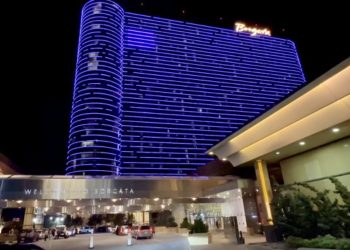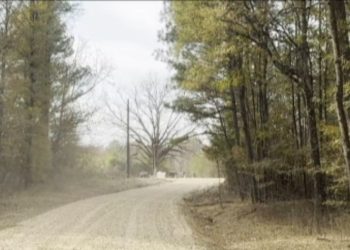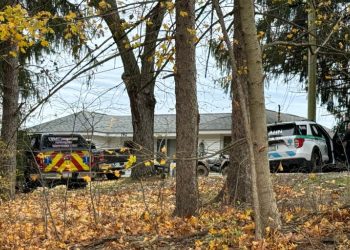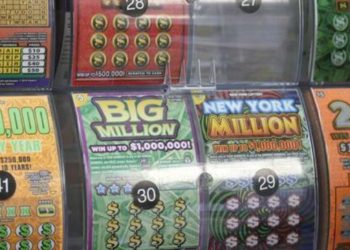Drivers throughout numerous cities in the United States face the challenge of traffic congestion. This problem wastes precious time while harming air quality, public health, and economic productivity.
Recent reports reveal that American drivers collectively spent billions of hours trapped in traffic, creating substantial costs in both time and money.
Certain cities experience more severe conditions than others, with gridlock becoming commuters’ daily battle. This post examines the top 10 U.S. cities experiencing the worst traffic jams, explores what causes their congestion, and discusses how it impacts daily life.
1. Chicago, Illinois
Chicago frequently claims the top position for America’s worst traffic conditions. Drivers here waste an average of 155 hours annually, making traffic jams a constant source of frustration.
The city’s dense road network creates significant traffic congestion, particularly when combined with aging infrastructure and continuous construction projects.
Chicago’s expressways rank among the nation’s busiest and transform into parking lots during rush hour.
With over 2.7 million residents plus a constant stream of suburban commuters, Chicago naturally struggles with persistent gridlock.
2. Boston, Massachusetts
Boston’s historic streets create an unpleasant driving experience through their narrow, winding design that predates modern traffic demands.
Boston commuters waste approximately 134 hours each year in traffic. The outdated road network combines with high numbers of tourists and students who crowd the city to worsen congestion.
Frequent roadwork and construction projects compound the challenge, appearing as permanent fixtures on Boston’s streets. These combined factors establish it as one of America’s most congested cities.
3. New York City, New York
New York City operates as a densely populated metropolis filled with vehicles on every road. While the city maintains an extensive public transportation system, roads stay congested due to overwhelming numbers of commuters, tourists, and delivery trucks.
NYC drivers waste an average of 117 hours annually trapped in traffic. Narrow streets, frequent construction projects, and massive vehicle volumes create perfect conditions for gridlock.
New York’s downtown area becomes especially congested during peak hours, mixing office buildings, tourist attractions, and entertainment venues.
4. Philadelphia, Pennsylvania
Philadelphia, the City of Brotherly Love, earns notoriety for traffic congestion. The city’s roadways, constructed long before modern cars dominated urban life, struggle to handle growing vehicle numbers.
Philadelphia commuters deal with regular lengthy delays, losing an average of 114 hours annually per driver.
Aging infrastructure, narrow roads, and frequent accidents create traffic slowdowns, especially during rush hour.
The city’s role as a transportation hub for tourists and business travelers intensifies these traffic problems.
5. Miami, Florida
Miami’s rapid growth and urbanization have exceeded its capacity to construct new roadways and upgrade infrastructure.
City drivers waste approximately 105 hours annually in traffic congestion. Miami’s busy tourist seasons worsen the situation as visitors flood the city, adding more vehicles to already crowded streets.
The city’s layout forces many people to depend on cars through its sprawling suburbs and ineffective public transportation. Consequently, city highways like I-95 frequently clog with traffic, particularly during peak hours.
6. Los Angeles, California
Los Angeles gains infamy for sprawling roadways and constant traffic jams. With over 4 million residents plus high volumes of commuters from neighboring cities, LA traffic congestion defines daily reality.
Drivers here waste an average of 95 hours annually in gridlock. The city’s vast urban sprawl combines with limited public transportation options to create heavy dependence on personal vehicles.
The notorious 405 Freeway connects multiple city areas but frequently experiences severe bottlenecks, especially during rush hour. Roadwork and construction projects regularly disrupt traffic flow, intensifying congestion further.
7. San Francisco, California
San Francisco’s unique geography presents particular challenges for drivers through its steep hills and limited road space.
Beyond its topography, the city suffers from severe traffic congestion, forcing drivers to waste approximately 97 hours annually in traffic jams.
The city’s high population density, limited parking, and large tourist numbers contribute to constant traffic slowdowns.
Silicon Valley tech workers strain the city’s roadways further, making driving a slow and stressful experience, particularly during rush hours.
8. Washington, D.C.
Washington, D.C., the U.S. capital, gains notoriety for congested roadways. Drivers waste an average of 83 hours annually in traffic jams, ranking it among the country’s most gridlocked cities.
The city’s complex road network creates major traffic delays through its mix of major highways and winding streets. Political events, protests, and conventions regularly disrupt traffic flow as well.
Large numbers of federal workers, tourists, and suburban commuters strain the city’s ability to manage transportation demands, especially during peak hours.
9. Houston, Texas
Houston, Texas’s largest city, experiences significant traffic congestion as drivers waste approximately 74 hours each year in gridlock.
Houston’s vast size and rapid population growth have created heavy dependence on personal vehicles.
The city’s limited public transportation options make it difficult for residents to find driving alternatives.
The city’s sprawling nature forces many commuters to travel long distances to work, contributing further to congestion.
While the city has invested in transportation infrastructure improvements, Houston’s growing population continues straining its roadways.
10. Seattle, Washington
Seattle ranks among America’s most congested cities, forcing drivers to waste an average of 74 hours annually in traffic.
The city’s limited road network combines with rapid population growth and challenging geography to create perfect gridlock conditions.
Seattle’s waterfront creates traffic backups through its numerous bridges and tunnels, particularly during rush hour. The city’s steep hills and narrow streets complicate traffic flow further.
Increasing numbers of residents and tourists will likely worsen Seattle’s traffic congestion unless the city makes significant transportation infrastructure improvements.










